Key takeaways:
- Gender equality advocacy is essential for creating a just society by challenging societal norms and empowering individuals to pursue their passions.
- Community engagement is crucial, fostering dialogue and collaboration that transforms hesitations into proactive advocacy.
- Effective advocacy leverages storytelling and social media to amplify voices and broaden the reach of initiatives.
- Persistence, listening, and collaboration are key lessons learned from advocacy efforts, highlighting the importance of shared experiences and teamwork.
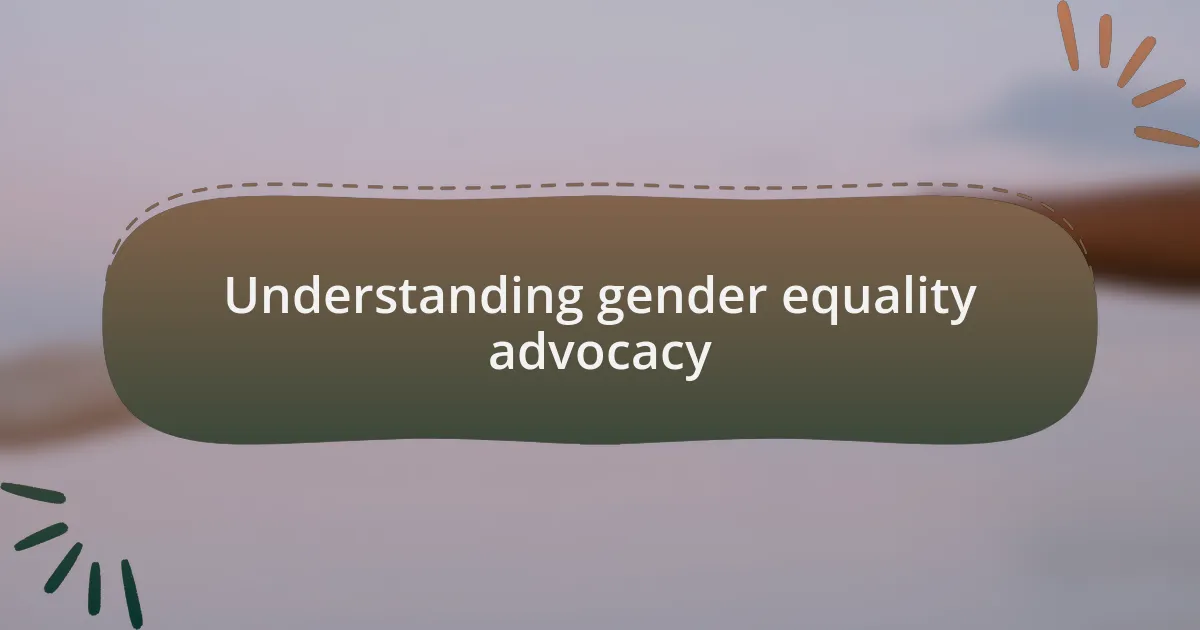
Understanding gender equality advocacy
Gender equality advocacy is about ensuring that everyone, regardless of gender, has equal rights, opportunities, and responsibilities. I remember when I first got involved in this field; it struck me how some people were still unaware of the daily injustices faced by women. It was a wake-up call that sparked my passion for advocating for change, and I often find myself asking, “How can we expect progress if we don’t first acknowledge the problem?”
At its core, gender equality advocacy involves challenging societal norms that perpetuate inequality. I once attended a workshop where someone shared their story about being overlooked in a leadership role solely because of their gender. That moment deeply resonated with me—how many talented individuals go unrecognized due to biases that we all play a part in perpetuating? It made me realize that advocacy isn’t just about speaking up; it’s also about amplifying voices that need to be heard.
Engaging in gender equality advocacy requires both knowledge and empathy. I’ve learned that understanding the cultural and systemic barriers that different groups face is crucial. Each story I hear is a reminder of the complexities involved in this issue and why it’s essential for us to work together in fostering inclusive environments. When we actively engage with each other’s experiences, we can better advocate for policies and practices that promote true equality.
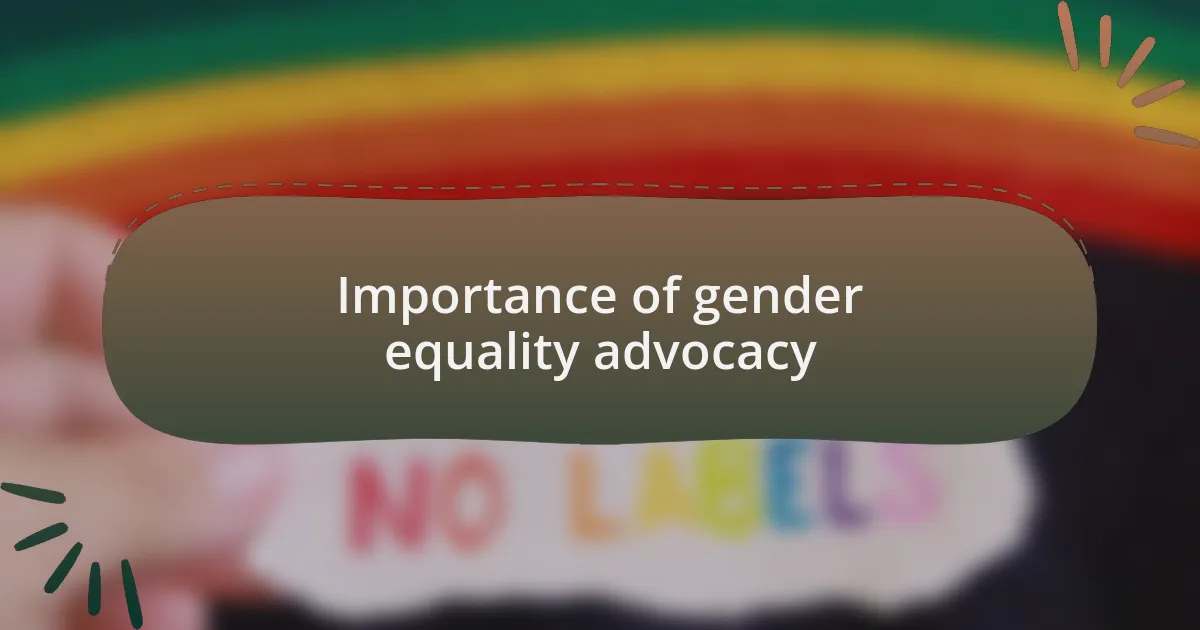
Importance of gender equality advocacy
Advocating for gender equality is critical because it lays the groundwork for a more just society. I often reflect on a community event where a young girl spoke about her dreams. She aspired to be a scientist, but she felt discouraged by the subtle yet pervasive messages that science wasn’t for girls. It hit me hard—how many dreams are being stifled every day because of outdated stereotypes? We must advocate not only for policies but also for a cultural shift that empowers everyone to pursue their passions freely.
The impact of gender equality advocacy extends beyond individual stories; it shapes entire communities. I remember attending a town hall meeting where local leaders shared how gender equality initiatives led to improved economic growth. By including women in decision-making roles, the community thrived. If we continue to overlook this important dimension, can we truly call ourselves progressive? This is why advocacy work feels urgent; we must champion equality for the collective benefit.
Moreover, the importance of gender equality advocacy resonates at a global level, affecting policy decisions and international relations. I was struck during a panel discussion when an expert revealed that nations with higher gender equality indexes tend to have more stable economies and lower rates of violence. It made me pause and think: why wouldn’t we want to support this kind of change? Our advocacy doesn’t just empower individuals; it creates safer, more equitable spaces for everyone, which is why this work is so vital.
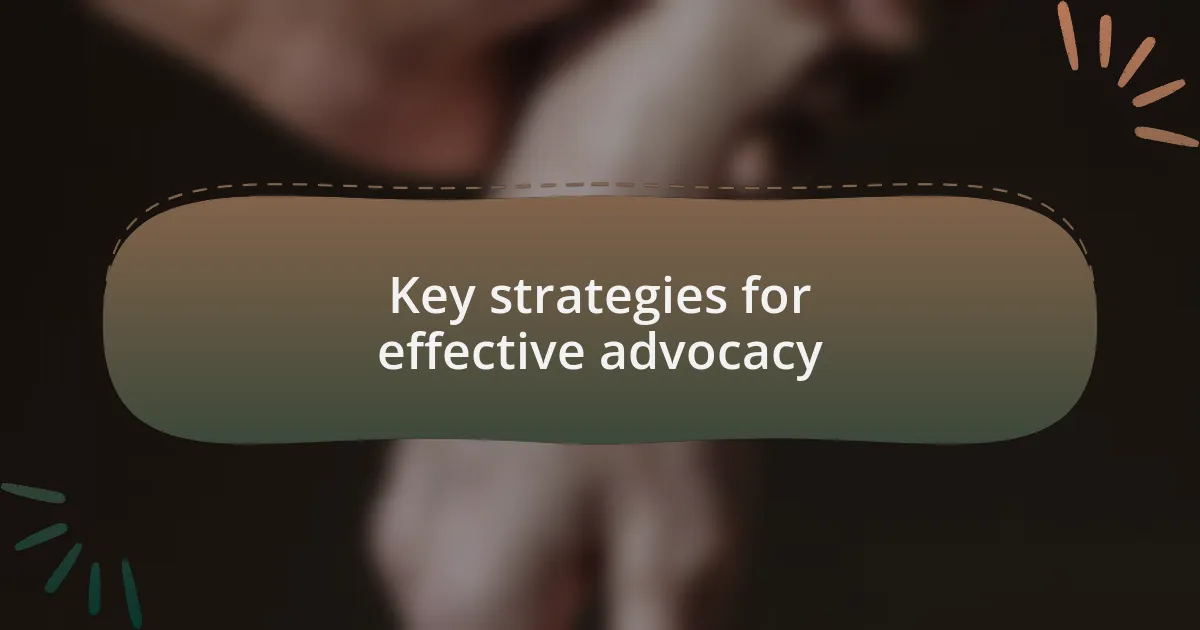
Key strategies for effective advocacy
Finding common ground is essential in effective advocacy. In my experience, building coalitions with diverse groups has proven to be incredibly impactful. Just last month, I collaborated with an organization focused on environmental issues to highlight how gender equality intersects with climate action. It was eye-opening to see how shared goals can amplify our voices, creating a stronger, united front for both equity and sustainability.
Storytelling serves as a powerful tool in advocacy. I vividly recall a workshop where participants shared personal narratives about facing gender bias. Hearing those stories not only deepened my understanding but also fostered empathy and connection among attendees. Isn’t it fascinating how personal experiences can drive collective action? Capturing the emotional essence of these stories helps rally more support and encourages others to join the cause.
Lastly, leveraging social media effectively can broaden the reach of advocacy efforts. I often utilize platforms like Twitter and Instagram to share impactful statistics and experiences, drawing attention to pressing issues. I once tweeted about a local campaign and was amazed at the engagement it generated, turning a modest initiative into a community-wide movement. How often do we underestimate the power of a simple post? Social media isn’t just a tool; it’s a platform for voices that deserve to be heard.
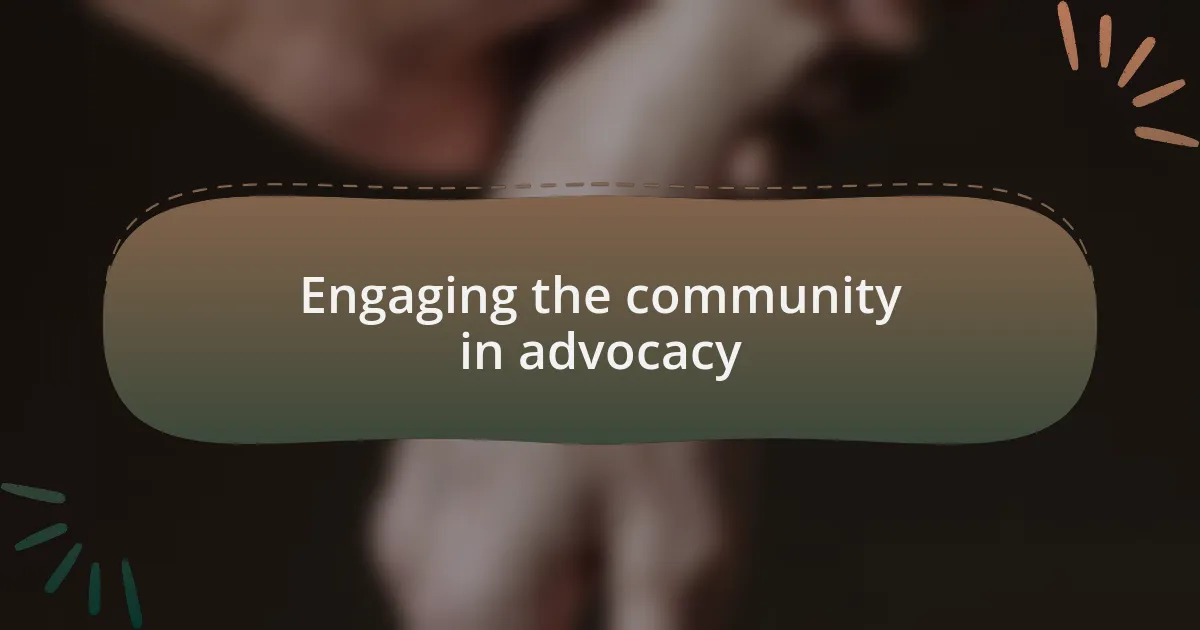
Engaging the community in advocacy
Community engagement in advocacy is not just a strategy; it’s the heartbeat of any impactful movement. During a local event, I remember sitting in a circle with residents discussing their concerns about gender equality in our town. As I listened, I realized the power of creating spaces for dialogue—sharing in a supportive atmosphere ignited passion and pushed individuals to act. Isn’t it amazing how giving people a platform can transform their hesitations into proactive engagement?
Organizing interactive workshops can truly bridge gaps within the community. I once facilitated a series of sessions where individuals from various backgrounds brainstormed solutions to local gender disparities. The energy in those rooms was palpable—ideas flowed, and commitment blossomed. It left me wondering: what if more organizations prioritized these collaborative experiences to strengthen our advocacy efforts?
Another effective way I’ve found to engage the community is through volunteering opportunities. I recall signing up for a neighborhood cleanup with a gender-focused initiative and was surprised to see how many people joined us. This shared experience forged connections and sparked conversations about gender issues. Have you ever noticed how working together towards a common goal builds not only awareness but also camaraderie? It’s remarkable how small actions can lead to bigger conversations and greater community involvement in advocacy.
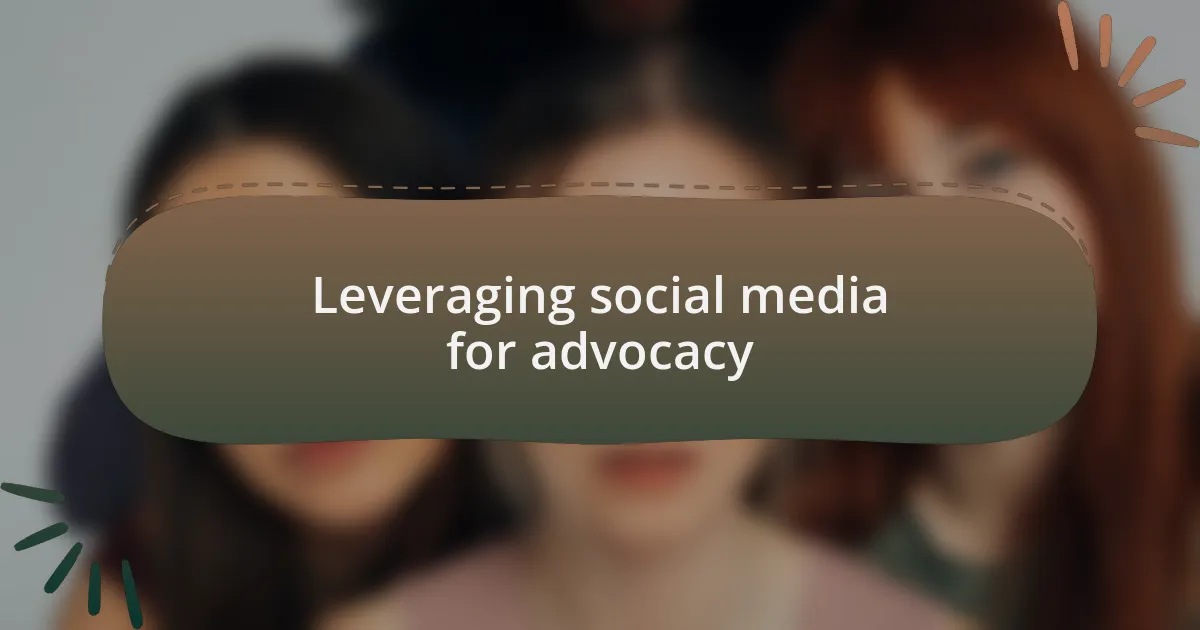
Leveraging social media for advocacy
Social media has become a powerful ally in the fight for gender equality. I remember when I first launched a campaign on Twitter to raise awareness about domestic violence; the response was overwhelming. People I had never met reached out to share their stories, illustrating how digital platforms can foster empathy and community among advocates. Have you ever thought about the reach your voice can have in a virtual space?
Engaging with followers through Instagram stories was a game changer for me. I started sharing quick tips on supporting gender equality daily, and to my surprise, these posts often resulted in meaningful conversations in the comments section. It’s fascinating how a simple image or video can inspire people to reflect on their beliefs and push them to advocate for change. What if we harnessed these tools more effectively to connect with younger audiences who are passionate about these issues?
Additionally, I found that Facebook groups serve as fantastic forums for ongoing discussions. Joining one dedicated to women in leadership, I found a treasure trove of resources and advice that helped shape my approach to advocacy. The shared experiences and the sense of collective purpose within that group reinforced my belief that social media isn’t just about broadcasting messages; it’s about building supportive networks that amplify our voices. Isn’t it exciting to think about how we can extend our advocacy beyond our immediate circles with just a click?
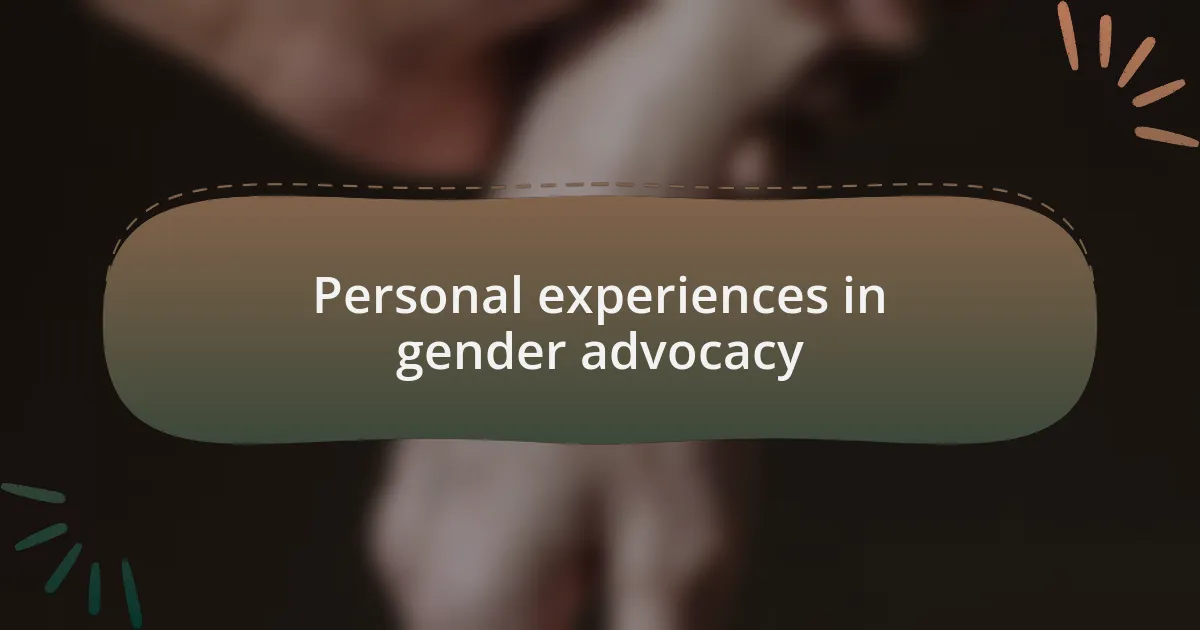
Personal experiences in gender advocacy
Advocacy isn’t just about sharing statistics; it’s deeply personal and often challenging. I distinctly remember attending a rally where survivors of gender-based violence bravely shared their stories. Standing in that crowd, I felt a surge of emotion, realizing that each voice contributed to a broader narrative of courage and resilience. Have you ever felt that sense of unity in your own local community?
One transformative experience for me was when I participated in a workshop designed to empower young women. Listening to their aspirations and struggles touched me profoundly and reignited my passion for advocacy. It made me realize that our stories, even when they are difficult to share, can illuminate the path for others. How can we harness the power of these shared experiences to drive change?
Additionally, my journey in gender advocacy led me to mentor a young activist who was just starting out. This relationship not only gave her direction but also enriched my understanding of the challenges newer advocates face. I often find myself asking, what can we do to bridge the generational gap in activism? Supporting each other creates a ripple effect, fostering a culture of empowerment that can lead to lasting change.
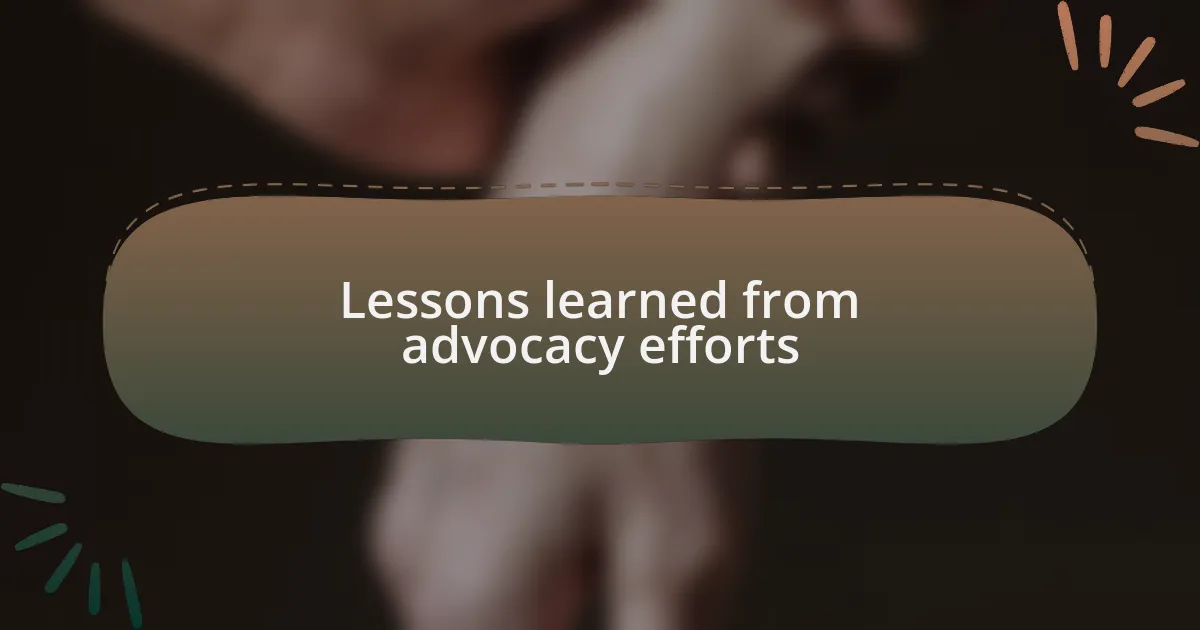
Lessons learned from advocacy efforts
Engaging in advocacy has taught me that persistence often yields the most significant results. I recall a time when I tirelessly campaigned for policy changes at my local government level. After countless meetings and discussions that sometimes felt hopeless, our group finally succeeded in passing an important resolution. It made me reflect on how unwavering commitment can truly shift the landscape of policy, wouldn’t you agree?
Another key takeaway has been the importance of listening. During one of our community forums, I observed how the most impactful discussions emerged when we simply allowed people to share their stories without interruption. It struck me that advocacy isn’t always about presenting solutions; sometimes, the most potent form of support is just being there to hear and acknowledge others. Have you noticed how powerful it can be when people feel heard?
Finally, I’ve learned that collaboration multiplies impact. A memorable moment for me was when I teamed up with various local organizations for a combined event. The synergy of diverse perspectives not only enhanced our outreach but created a vibrant tapestry of support that resonated with our community. It left me pondering—how might our combined efforts be the key to facing larger systemic challenges in gender equality?